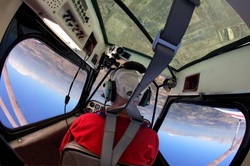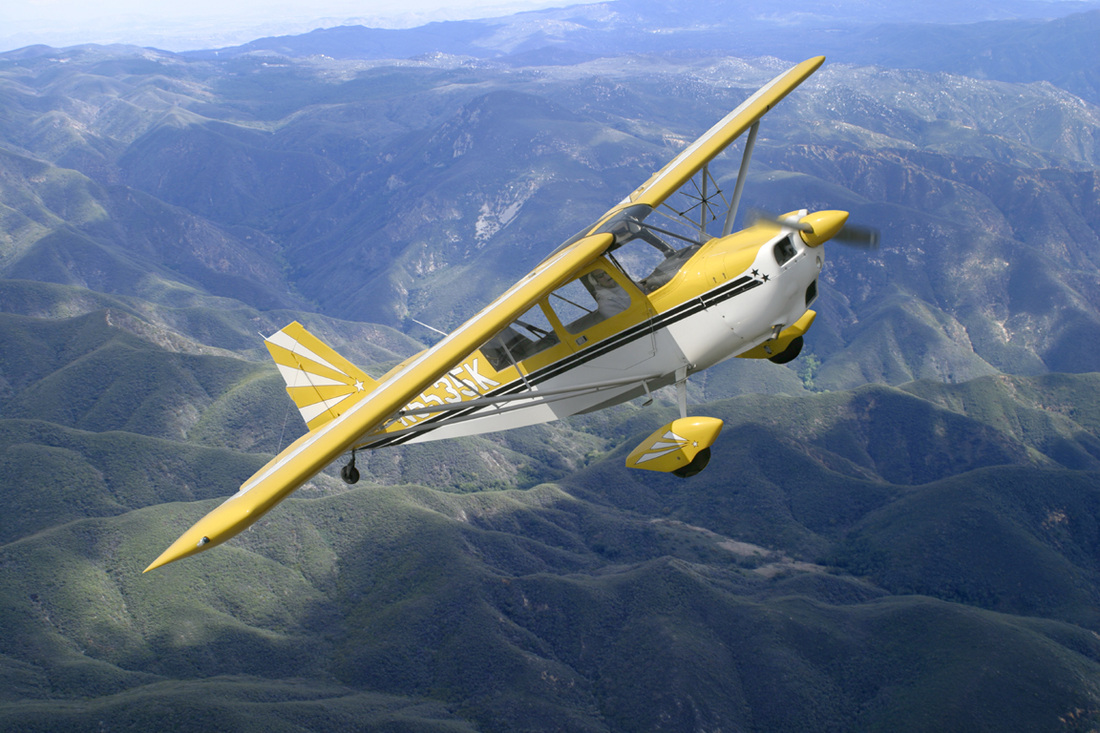 I am at 30 with about five and a half years of pilot-in-command (PIC) experience in the C-152, C-172, DA-40 and PA-28. All of these are really great aircraft with their own unique characteristics that make each of them incredible machines – the tiny C-152, for instance, is the essence of flying – with one of the most basic cockpits and a tiny engine, you fly it by feel and most importantly sight (no PFD’s or MFD’s to fixate on). At the other end of the spectrum is the DA-40, a sharp looking four-seater with a canopy and a stick that flies incredibly nimble, quick and provides an abundance of information to the aviator through two large LCD displays. While I could go on flying the above four aircraft for the rest of my piloting days and remain completely satisfied, when unique opportunities pop up, you need to strike. That is what happened when I was notified of a Living Social deal for a 40 minute ride in one of Gauntlet Warbirds’ T-6 Texans (SNJ to be technically correct) out of KARR. I snapped it up and then soon got to thinking about some of the other opportunities Gauntlet offers to pilots. After a few e-mails, I was lined up for a course in basics of aerobatics (and some other goodies I’ll describe below) in a Bellanca Decathlon. After a very thorough ground school session coupled with a lot of studying, I rolled out to the airport after work a couple of Wednesdays ago and got geared up in a flight suit, parachute and helmet, ready to conquer gravity. Talk about feeling like a badass! The preflight procedures for a Decathlon are fairly straightforward, except for the fact that the aircraft is covered predominantly in fabric (versus the metals / composites that I’m used to)!!! It didn’t hit me until our walk around that the plane is not covered with a material that I can knock on and hear an echo – no, this one compresses when you push it. I thought it over for a second and looked over at Gauntlet’s Stearman and was comforted by the sight of an 80 year old fabric-covered aircraft still standing strong. We fired up the engine – odd start procedure by the way trying to hold the stick back while engaging the starter and simultaneously enriching the mixture – three tasks, two hands, and you also have to keep those toes on the brakes! When we eventually taxied into position on the runway, I kept repeating the instructor pilot’s (Ted) guidance in my head – “throttle smoothly to full with simultaneous forward pressure on the stick, wait a few seconds and stick further forward, wait for the tail to come up and hold that attitude”. Another portion of my brain was screaming “holy sh$%, you are about to takeoff in a tailwheel aircraft, keep it the hell on the runway – no ground loops!” What seemed like a blink later, we were climbing out at fairly a steep angle (seriously, I was wondering where there horizon was when looking straight forward) maintaining our Vx of 65 mph and setting course to the practice area to the SW. Ted broke me in well to the aircraft on our outbound leg by having me do some turns to show the importance of coordinated flight (aileron plus rudder usage). It was quickly obvious that my historical usage of the rudder pedals could be summarized as conservative or even timid. After getting the basic turns down, we also did some uncoordinated flight – full left rudder plus right full right aileron. This is something I would have never dreamed of doing in another aircraft, but knowing the capabilities of the Decathlon helped me through initial uncertainty. Once reaching the practice area and our planned altitude, we did some clearing turns and commenced with steep turns, stalls and prolonged stalls. Given that all pilots have accomplished steep turns and stalls during initial and recurring training, I’ll skip to the prolonged stalls. Basically, the objective is to keep the aircraft in a stall without causing the break (nose pitch down) or allowing the aircraft to roll to one side or another. Such seemingly impossible task is accomplished through a lot of rudder action! It almost feels like surfing – just anticipating what the aircraft wants to do and responding with determined and controlled inputs. It. Is. Awesome. Seriously, I felt like I mastered flying once my rudder inputs, brain and the aircraft began to act as one and we settled into a nice equilibrium of forward, descending flight in a stall. That was about the end of our allotted time with the sun well into its own descent and accordingly we turned back to the east to return to base. With the airport already in sight and us a minor 5,000 feet above the traffic pattern altitude of 1,700 feet MSL, the throttle had to come way back to maintain a designated descent speed of 120 mph while keeping the Y vector of our descent substantial enough to avoid diving into the middle of the pattern. That experience alone was quite a rush. For a rookie, I was happy that the winds were directly out of the east and we got to set up on a straight in for Rwy 9 (the big one) at KARR. What a different feel it is in an aircraft with no flaps – I felt like we far too high in comparison to the normal glideslope, but the Decathlon at a descent speed of 75 mph settled into a controlled approach and after a few hundred feet it was apparent that we were going right for the numbers. The objective on the first flight was to land and keep it on the ground going straight. Seems obvious, but with physics and the design of a tailwheel aircraft, managing the aircraft to the ground and to a stop is an active process the entire way. Compared to my previous experiences, the flare comes in a little later, but like all other landings, the key is to hold it a few feet above the ground while the airspeed bleeds off and the aircraft settles through ground effect and onto the pavement in a controlled manner. We actually touched down with the tailwheel first which was an objective for the first flight as it substantially decreases the chances of the aircraft inadvertently flying again (think declining angle of attack as the nose settles down after initial contact of the tailwheel – sweet physics!). More to come! dit.
0 Comments
Leave a Reply. |
Authors:
|


 RSS Feed
RSS Feed